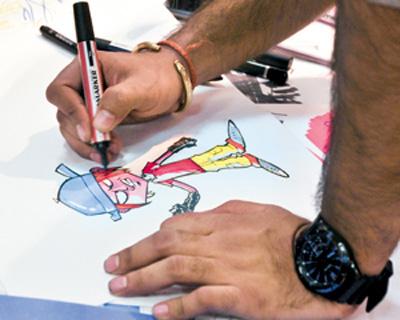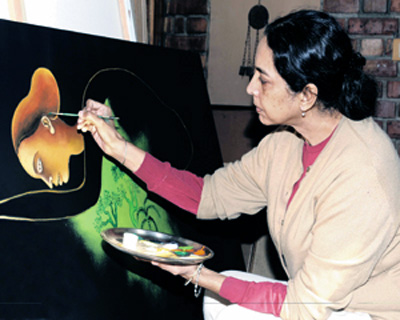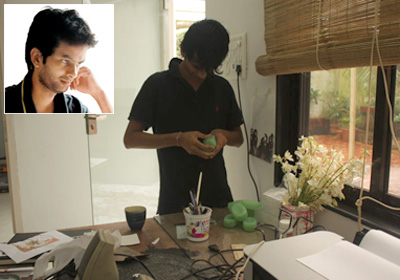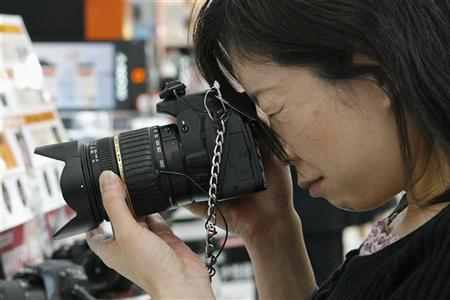 | « Back to article | Print this article |
'21st century belongs to creative minds'
Shipony Pavitran Suri talks to professionals who tell us why fine arts sees a positive trend in the 21st century and what aspirants must do to pursue a career in creative arts.
FAST FACTS
Programme: Bachelor of Fine Arts (BFA)/ Bachelor of Visual Arts (BVA)
Specialisation: Painting; Sculpture; Applied Art; Art History
Top institutes: Baroda School of Art, JJ College of Art, College of Art, Delhi
Employers: Mass media, multimedia companies, galleries/e-galleries, museums, schools/colleges, fashion houses, hospitals, corporates
Job roles: Painter, sculptor, graphic/web designer, animator, illustrator, artist, art critic/curator, set designer, art director, advertising professional, teacher, professor
Since his school days, Ajay has had a fascination for the HB pencil. The moment one lands up in his hands, he can't stop doodling on paper.
Ashish on the other hand was fascinated by visuals, which explains why his mini-library houses 2000 comics!
"I would sketch classroom scenes in school and the world outside my window," recalls Ajay Kant Pathak, now an Executive Creative Director at ad agency Crestra Communication, where he makes creative pitches to clients, develops brands and supervises the design team.
On the other hand, Ashish Chawla is a fashion photographer with his own studio in Gurgaon.
"I would learn fast by seeing visuals, which became my language in school," recalls Ashish.
Both Ajay and Ashish honed their creative skills by attending the Fine Arts programme at College of Art, Delhi.
Relevance of art
"The relevance of Art can be seen down civilisations. It has the power to record the events of a particular period of history. For instance, cave dwellers' painting depicted the life of man," shares Paramjeet Singh, Chairman of the All India Fine Arts & Crafts Society (AIFACS).
Art is often an expression of man's experience in his life. And the big challenge in art is how to reproduce reality with a creative touch?
When cartoonist Harinder Singh makes a cartoon he states what he has observed around him.
He recollects his work on pollution, "Based on my study of how people react at ITO (heavy traffic spot in Delhi), I drew a narrative between a boy and the mother chit-chatting about traffic snarls and pollution with humorous tone," he shares.
Please click NEXT to continue reading...
Preparation and selection
Fine Arts training
After Class 12, one can pursue a Bachelor of Fine Arts (BFA) or Bachelor of Visual Arts (BVA) which helps students develop and refine their artistic expression.
There is no difference between BFA and BVA, and the term varies from college to college.
Alongside broad-based art education, students choose a specialisation to have close focus on a particular art: Painting; Sculpture, Applied Art or Art History.
A student can further broaden his skill by doing two-year Master's in Fine Arts (MFA/MVA) -- a performance-based programme where you are free to develop your own concept in a particular art form.
Selection process
Selection is through an aptitude test and art tests.
Devashish Sharma, BFA-Painting student at MSU Faculty of Arts recalls questions such as 'Is MF Hussain a painter or sculptor?' And 'Is Amjad Ali Khan a Sarod or Guitar player?' in the General Knowledge section.
"In the life drawing section, we were given a still model to draw (bucket, football, etc). The painting paper was based on a particular theme like a scene of bus stand, railway station," he recalls.
Prof Soumen Lahiri, Applied Art, College of Art, Delhi, gives some insight.
"You have to be a keen observer and be familiar with the art world. And you must be a good visual story teller," he shares.
Offering quick tips to master each section, he says:
For GK: Brush up art history books.
Still drawing: Keep in mind the distance, line and shape of the object.
Thematic painting: Paint a theme like a story teller (festival/bus-stand scene). Having a good practice of drawing human figures is useful.
Where to study
These are the top 5 colleges in India
- Baroda School of Art, Gujarat
- College of Art, Delhi
- JJ College of Art
- Jammia Millia Islamia University, Delhi
- Banaras Hindu University (BHU)
Choose a specialisation
PAINTING
"Painting class teaches colour theories and different painting techniques like life study, drawing, sketching and composition," says Devashish.
Standing next to a painting stand with intense gaze on canvas, Arpana Caur, a Delhi-based contemporary artist is harmoniously mixing colours on her palette to portray a night mood.
She is busy with her tools -- brushes, pencils, wax colour pencils, charcoal and oil paints. Her relentless hard work paid off. She never directly sells her work, today galleries approach her. "Earlier there were hardly any takers for art. Of late, art has become a symbol of trend in the society," Arpana reveals.
Job focus: You can hold your own exhibitions in galleries/eGalleries where art work is kept for auction or market your work to private collectors.
Mural paintings are also catching up. One can join seasonal art residencies which funds, provides space to produce work.
Paramjeet says, "Last year for a 3-day art camp, we selected 60 artists from 16 states based on their bio-data and work catalogues. Junior artists received Rs. 10,000 and seniors -- Rs 15,000."
Priyendra Shukla, an independent painter loves multi-tasking -- he dispatches his art pieces for group shows, galleries; design stage shows. He recently made 100 Mahabharata illustrations for Satya Paul designer sarees.
SCULPTURE
A sculpture student learns to shape figures by chiselling stone/modelling clay/casting metal.
Aloof from public chaos, Asur Vedh is dexterously moulding metal to design three-dimensional artworks at his studio at Garhi, Delhi (a community studio for artists).
Why did he chose metal? "It holds greater value in the market. If stone object is broken, we can't repair it. With metal, we can always bring life," Asur confirms.
To excel, you should have a good command over human anatomy.
Job focus: Many companies commission sculptors to beautify their premises. Historical and science museums hire them as animal/human modellers.
Film/animation/toy industry bank heavily on sculptors to mould the subject into fantastic action figures.
Amit Rajput, sculptor, works closely with toys and tiles. Both Asur and Amit strongly feel that students must do computer 3D modelling course as it opens options in technology-based industry.
APPLIED ART
One of the most popular specialisations in BFA, applied art teaches a student on how to use art for commercial purposes -- designing ads, posters, books and other displays to promote sale.
Job focus: Magazines, books etc
Art designers -- Nilanjan started his career as an illustrator and stepped up his skills at the magazine, India Today, learning digital illustration, photo morphing techniques.
Today Nilanjan Das as the creative art director of Fortune Magazine, designs from cover, typeface to illustrations. To work in publications, he feels, "Your mind must run parallel with journalists to visualise a story."
A fine knowledge of Photoshop, In design, Quark Xpress, Corel Draw is a must.
Illustrators create drawings for books, magazines, newspapers, advertisements. They work in different styles like graphic, digital or realistic illustrations.
A cartoonist brings comic, critical essence to caricatures. He delivers a message with a punch and sometimes he writes captions as well.
"For newspapers, you must think fast, read topical issues intensely," says Harinder.
ADVERTISING
You have to understand client's brief, target audience and produce visually appealing ads right from brochures, pamphlets, fliers to billboards.
Ajay chuckles, "I have to be alert as ideas are everywhere -- malls, cinema and social sites."
TV/ Films
Indranil Mukherjee, Graphic Head of NDTV conceptualises and applies his creative abilities for packaging shows like how to represent show opener, give various titles using different colours, text size.
Unlike films, graphic designers in news channels have to be quick with presentation.
"We are very alert during live programmes. If we misspell texts, then we are accountable for the reputation of the channel," he shares.
Photography
Unlike other art forms, photography has a different momentum.
Ashish Chawla, freelance fashion photographer, who has flexible work hours shares, "I get instant gratification when a picture gets ready in split seconds. Once you capture a moment your work is done."
Photographers work in different set-ups -- business, manufacturing, magazines, newspapers, films, export houses, advertising, website portals and weddings.
Editorial photography is meant to tell a story while product photography captures photos of commercial products and services.
Piyush Srivastava, product photographer at brandsvillage.com shoots every buyable product from accessories and clothes to bags, shoes and watches.
ART HISTORY
A student of art history closely studies theories based on every aspect of visual arts from prehistoric times to the present day.
Eventually you develop to the ability to critically think about visual forms. Vidya Shivdas, an Art History student from Baroda School of Art is an art curator at Vadhera Art Gallery, Delhi.
She visits artists' studios to select their pieces, conceptualises and organises exhibitions, evaluates art works that collectors donate and writes about art for catalogues, brochures, magazines and books.
Curators are hired by galleries, auction houses, newspapers, tabloids and magazines.
'Painting class helped refine my observation skills'
Shashi Thavudoz who holds a masters degree in Visual Arts from Baroda School of Art with a specialisation in painting shares his journey from an arts student to a fine arts professional.
The frequent exercises in my third year BVA painting class helped refine my observation skills.
I would collect 20 different textures of leaves and study different colour shades. Art History class was insightful -- it taught all about Indian and Western art movements.
Develop a unique technique
I would spend sleepless nights in my classroom experimenting with different styles of drawing. Finally, an idea appeared to explore drawings on "urban space".
From MVA, I started developing my own independent work -- I used PVC pipes, architectural drawings and sketches to show two or three dimensional forms of confinement and claustrophobia of urban set-up.
Teachers frequently visited and critically discussed my work. Finally, my presentation became my signature style.
Hunt for residential programmes
After MVA, I applied at various artist residencies -- a place where I can independently conceptualise, research and produce my work.
I got selected by Last Ship Residency, Mumbai which offered a two-month live-in studio, production cost, accommodation. At the end of tenure my work was exhibited.
I also received Inlaks Fine Arts Award which offered one-year grant of Rs 3 lakhs for professional growth.
Presently, I am working on a project called Artcity at Studio X, a studio residency at Mumbai.
It will depict the issue of urban planning in Mumbai. I have started documenting all construction sites and new flyovers. I am not expecting any selling value now.
My primary focus is to popularise my work, money can come later.
Attractive remuneration and scope of career
Creativity and marketing
If you have radical ideas and can produce original, inspiring work, then you have a long innings in the creative market. Along with drawing abilities, an artist must possess strong visual communication skills.
"Our creativity is tested by how fast we can adjust with time," reveals Indranil.
Creativity is never stagnant. You have to keep finding newer ways of expressing things.
"Self-promotion is a must. I created a portfolio of book covers and illustrations, which gained a lot of attraction from recruiters," shares Harinder, who recommends tailoring your portfolio based on your target audience or employer.
"Multitasking is a must -- apply for residencies, build up your network and do paid freelance work. Create an independent online website for yourself -- promote your work, your CVs," he shares.
Money talk
Remuneration largely depends on your skill and creative ability. It also varies from industry to industry. The entry level salary in ad agencies, magazines, newspapers ranges between Rs 15,000 to Rs 25,000.
Piyush, a product photographer earns Rs 30,000 per month.
According to Ashish, a photographer can make Rs 500 to Rs 5,000 per day.
Amit Rajput fetches Rs 40,000 from teaching and rest of the day he devotes to freelance work.
Art is endless
Art will continue to rule! A world without art would be static for want of creative input.
It stirs the imagination and motivates one to think and reflect.




